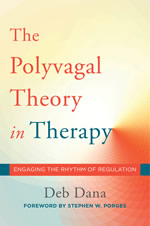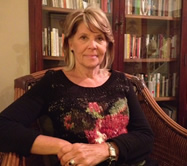Virginia Satir: The Basics
Why am I writing an article on Virginia Satir over three decades after her death? Because I believe that whenever therapists are interested in healing others and using whatever “modern” techniques in their practice it is useful to acknowledge the fact that Satir’s teachings offered a gold mine of principles that might be of interest to themselves and their clients.
Can Meditation Heal Schizophrenia?
Schizophrenia is a chronic brain disorder that affects about one percent of the world’s population. It has been defined as "a splitting of the mind" from German shizophrenie, a neologism coined in 1908 by Swiss psychiatrist Eugen Bleuler (1857-1939). It also stems from the Greek skhizein meaning to "to split" (schizo-) + phren (genitive phrenos) "diaphragm, heart, mind", including concepts associated in ancient Greek thought with the human mind. When schizophrenia is active, symptoms can include delusions, hallucinations, trouble with thinking and concentration, and lack of motivation. Research is leading to new, safe treatments. Experts are also unraveling the causes of the disease by studying genetics, conducting behavioral research, and using advanced imaging to look at the brain’s structure and function. These approaches hold the promise of new, more effective therapies. Neuroplasticity, neuroscience’s latest paradigm, may attempt to correct the abnormal integration across large scale neural networks associated with schizophrenia with methods like meditation.
Drumming as Somatic Therapy
The drum is a powerful grounding tool with the resonance activated by the player seeping from the drum, through the body and connecting and aligning to the rhythms of the natural world. Both mindfulness and grounding exercises can be given additional efficacy through the use of the drum, usually played at a tempo that replicates the mothers heart-beat at rest; 60-80 beats per minute. This tempo is associated with the calm and security that accompanies our time in the womb and is also believed to be the primary stimuli under which the areas of the brain responsible for our stress response are formed.
Remembering John Chitty: April 15, 1949 – February 28, 2019
John Chitty, my teacher, mentor, supervisor, friend and fellow pilgrim-on-the-path, has transitioned to the “magical place” where his life began.He often said, “We are a unit of consciousness that comes from an invisible spiritual world to Earth for the purpose of gaining wisdom through experience.” He offered these words as a mantra, used whenever greeting a baby. And, I think, perhaps everyone he met. I imagine him back in that other realm having new experiences, gaining more wisdom.
The Role of Connective Tissue in Character and Armour Development
Will Davis recently shared a paper he’d written on the role of connective tissue in character and armour development. After re-evaluating Reich's concept of muscular armour, Will offered a different perspective: he felt that the holdings in the myofascial system were primarily present in connective tissue (CT), not the muscles per se as Reich assumed. Will emphasized the connective tissues’ protective response to stress, and its plastic ability, during certain conditions, to return to the prestressed, healthy state. A matrix, he says, that acts as a non-neural, instantaneous communication system throughout the body, is formed because of the semi-conductive quality of connective tissue.
When I received his paper, I noted that it was 20 pages long. My initial instinct was, What? Magazine articles average 1500 words in length, not tens of thousands. And still, to honor my colleague, I read his paper. Thank goodness I did. I was fascinated by the content and pleased with the writing style—figurative language, first person, logical comparisons, concrete examples shedding light on conceptual renderings. I learned new content and enjoyed the experience.
As such, I am sharing his paper with you. I offer some excerpts from his text (not in linear sequence as presented in the paper) and a link to download the PDF to print and read at your leisure.
In Utero: A New Documentary Brings Educational Opportunities
In Utero is intended to help prevent some of the negative imprints and trauma that ensue through personal and professional ignorance. It does not delve into the known and applied modalities for addressing and healing trauma that occurs between conception and birth. It is essential for all of us to understand that, yes, we want to focus on the importance of this primal or primary period, and, if that time was not ideal, it does not have to be a life sentence. Current research is demonstrating that healing can occur at any time.
Writing as a Way of Healing: How Telling Our Stories Transforms Our Lives
“Writing has helped me heal. Writing has changed my life. Writing has saved my life.” These powerful first sentences of Louise DeSalvo’s Writing as a Way of Healing: How Telling Stories Transforms Our Lives immediately conveys the author’s strong belief in the curative power of writing. She posits that writing helps people recover from “thorny experiences” and can help heal those suffering from a variety of situations, from dislocation and violence to rape and racism (4). DeSalvo is a professor of English and Creative Writing at Hunter College and is the author of over a half dozen books, so her advice is rooted in her own personal experience using writing as an instrument of healing.
Intimacy from the Inside Out
Intimacy from the Inside Out (IFIO) by Toni Herbine-Blank, Donna M. Kerpelman, and Martha Sweezy is geared toward psychotherapists who are seeking an alternative method for practicing couples therapy. IFIO therapy stems from Internal Family Systems therapy (IFS), a model developed by Richard Schwartz in the 1980s as an approach to working with individuals and families, then later expanded to include couples. IFIO couple’s therapy involves a two-step process of planning for the predictable universal issues that couples face and responding skillfully to other unexpected factors. Couples entering IFIO therapy often hold the two goals of feeling safe within their relationship and reestablishing intimacy. In the initial session, the therapist meets with the couple to inquire about hopes and goals, assess their ability to accept differences in each other, and then offer a perspective on the possibilities of treatment.
12 Guiding Principles – Prenatal and Perinatal Psychology: Nurturing Human Potential and Optimal Relationships...
Understanding our earliest relationship experiences from the baby’s point of view and how these experiences set in motion life patterns has been the intense study of the field of prenatal and perinatal psychology for over 40 years. The field uses this lens to focus on our earliest human experiences from preconception through baby’s first postnatal year and its role in creating children who thrive and become resilient, loving adults.
Prenatal and Perinatal Psychology incorporates research and clinical experience from leading-edge fields such as epigenetics, biodynamic embryology, infant mental health, attachment, early trauma, developmental neurosciences, consciousness studies and other new sciences. Prenatal and Perinatal Psychology incorporates research and clinical experience from leading-edge fields such as epigenetics, biodynamic embryology, infant mental health, attachment, early trauma, developmental neurosciences, consciousness studies and other new sciences.
Safety in Therapeutic Interactions: A Polyvagal Influence
My journey involves a deep and prolonged exploration of the Polyvagal theory (Porges, 2011). In my quest to understand when intimacy, emotional expression, and connected communication are possible, I delved deeply into Porges’ research with the vagus nerve and its role in the evolution of the nervous system. His insights provided a road map for me and my clients to a fuller emotional life as we connected with our interoceptive awareness of emotions that motivate our behavior, their influence on our relationships, and the conscious choices we have.













